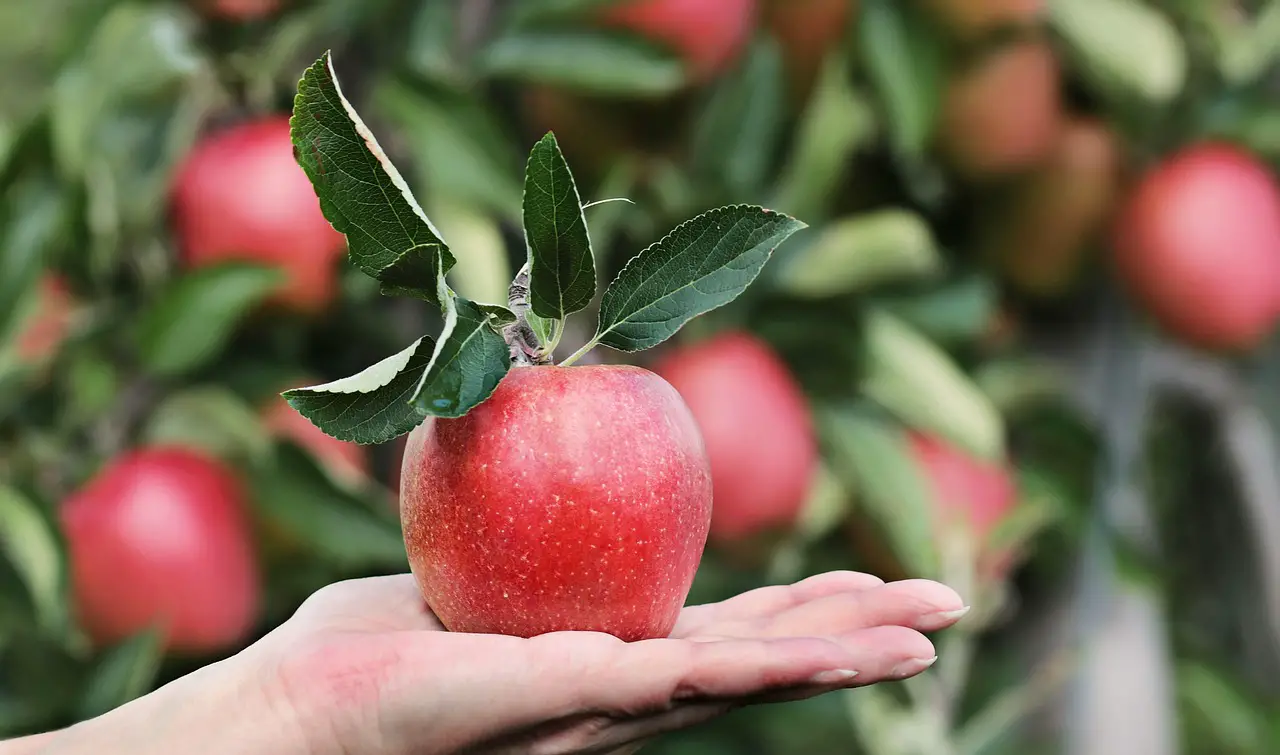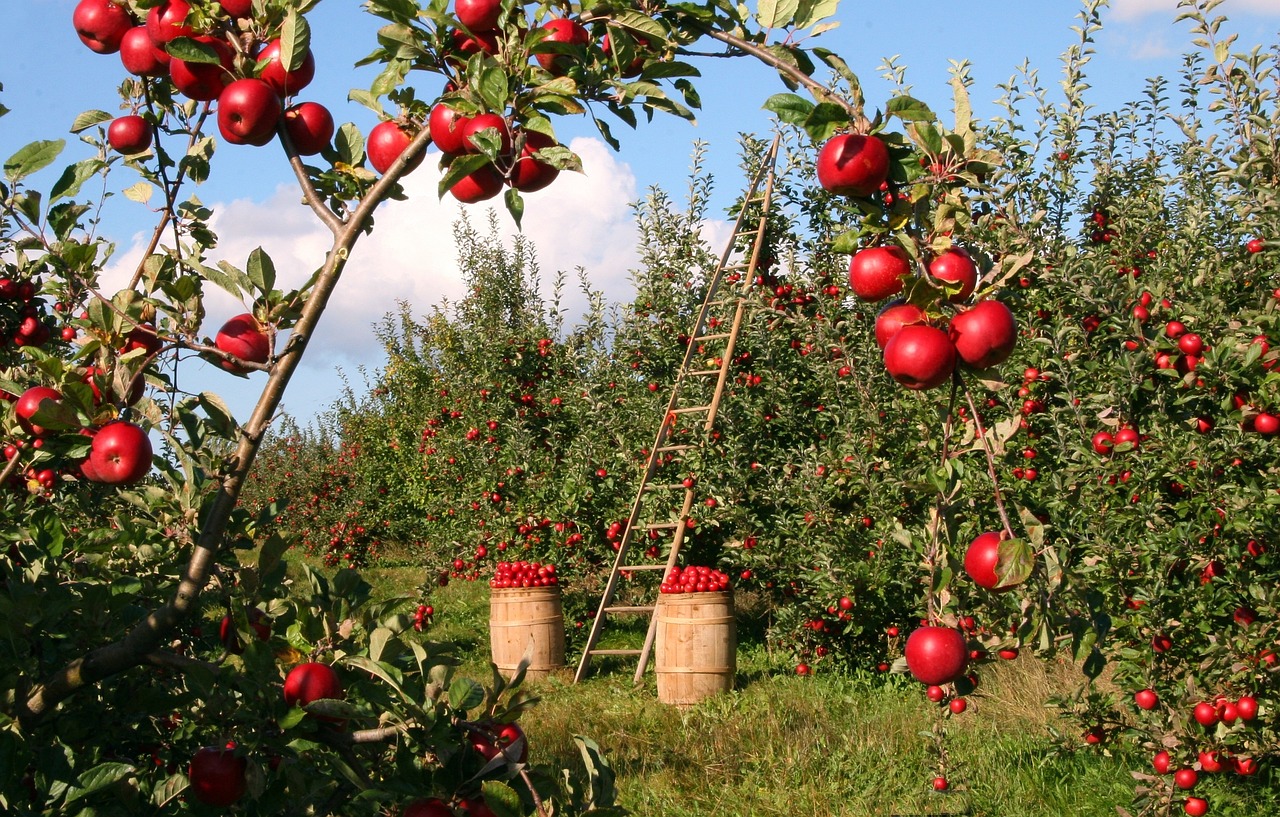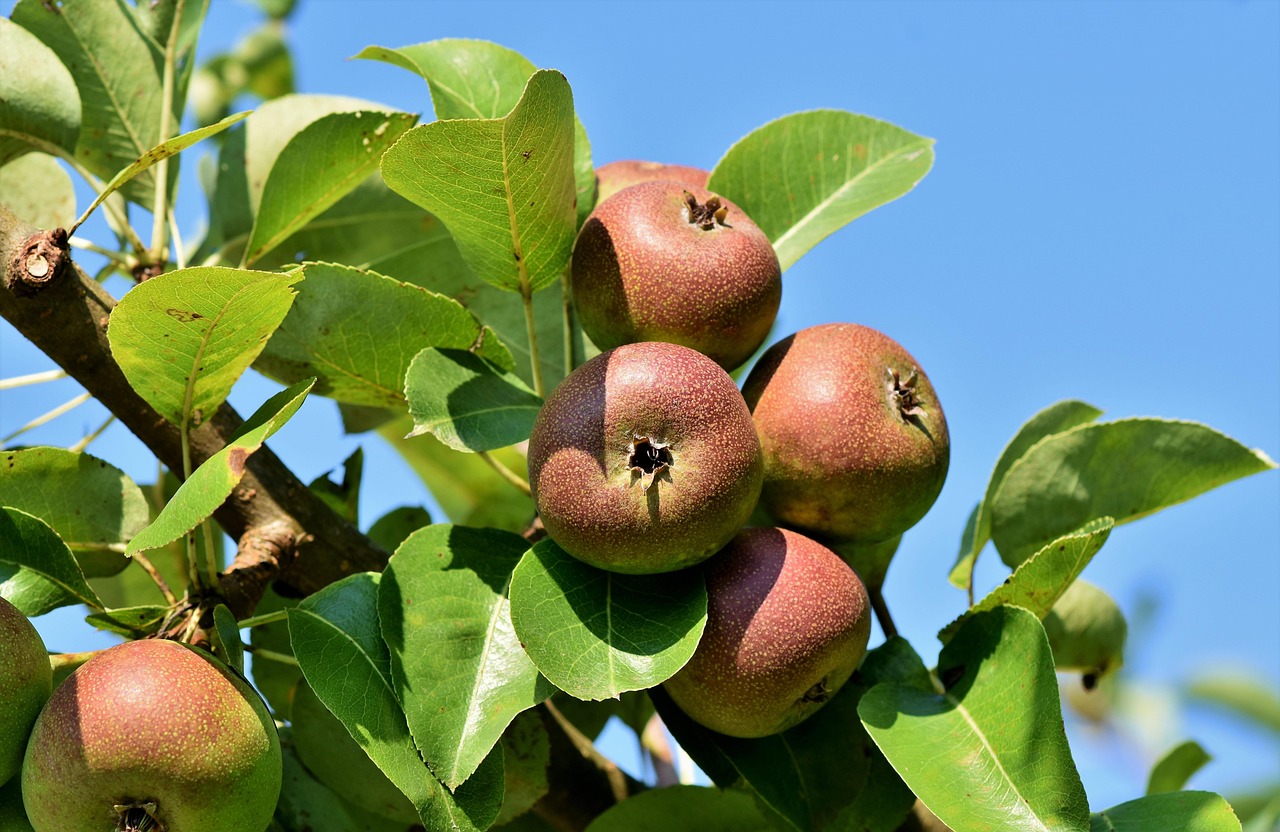Pruning apple trees can significantly benefit wildlife conservation by promoting healthy growth and creating habitats for various species. Proper techniques enhance fruit production, improve tree structure, and provide resources such as food and shelter for birds and other wildlife.
Apple trees are not only valued for their fruit but also play a crucial role in local ecosystems. They provide food sources for various animals, including birds, insects, and small mammals. By managing these trees through pruning, we can enhance their ecological benefits while maintaining their health and productivity. Understanding the importance of pruning is essential for anyone interested in wildlife conservation and sustainable agriculture.

Pruning is the process of removing specific parts of a plant to improve its structure, health, and productivity. With apple trees, the goal is to create an open canopy that allows sunlight to reach all parts of the tree. This is vital for photosynthesis and fruit production. Additionally, an open canopy helps reduce the risk of disease. Well-pruned trees tend to be more resilient against pests and diseases, creating a healthier environment for wildlife.
Benefits of Pruning for Wildlife
Pruning apple trees offers numerous benefits that extend beyond just fruit production. Here are some key advantages:
- Increased Biodiversity: A well-pruned tree can support a variety of wildlife species by providing more flowers and fruit.
- Improved Habitat: The structure of the tree can create nesting sites for birds and shelter for small mammals.
- Enhanced Foraging Opportunities: Pruned trees produce more accessible fruit and flowers, attracting pollinators and other wildlife.
- Promotes Healthy Ecosystems: Healthy trees contribute to soil stability and reduce erosion, benefiting surrounding plants and animals.
Additionally, pruning can help manage the size of the trees. This is particularly important in orchards where space is limited. Smaller trees are easier to maintain and can be more productive. They also provide better access for wildlife to forage on fruits and flowers.

Understanding the specific needs of apple trees is crucial when planning a pruning strategy. Different varieties may require different approaches to pruning. For example, some apple trees grow more vigorously than others, necessitating more frequent pruning. It is essential to research the specific type of apple tree before starting any pruning activities.
| Apple Tree Variety | Growth Habit | Pruning Needs |
|---|---|---|
| Fuji | Vigorous | Requires annual pruning to control height. |
| Granny Smith | Moderate | Annual pruning recommended for better fruit quality. |
| Braeburn | Moderate | Prune every couple of years to maintain shape. |
| Cortland | Dwarf | Minimal pruning needed; focus on dead or diseased branches. |
The timing of pruning is also an essential factor. Most apple trees benefit from winter pruning when they are dormant. This timing minimizes stress on the tree and reduces the risk of disease. However, some light summer pruning can be beneficial to manage growth and improve air circulation.
When pruning apple trees for wildlife conservation, it is vital to consider the habitat needs of local species. For example, leaving certain branches unpruned can provide perches for birds or shelter for insects. By balancing the needs of both the apple tree and local wildlife, we can create a thriving ecosystem that supports biodiversity.

A critical aspect of successful pruning involves using the right tools. Sharp, clean tools ensure clean cuts, which helps the tree heal properly and reduces the risk of infection. Some essential tools include:
- Pruning Shears: Ideal for small branches and precise cuts.
- Loppers: Useful for larger branches that require more strength.
- Saws: Necessary for removing thicker limbs safely.
- Gloves: Protect hands while working.
To maintain wildlife-friendly apple trees, it is also essential to monitor their health regularly. Watch for signs of pests or diseases and take action before they become severe problems. This proactive approach ensures that both the trees and wildlife continue to thrive together.
In summary, pruning apple trees can be a valuable practice in wildlife conservation. By understanding the benefits, timing, techniques, and tools required for effective pruning, we can enhance both the productivity of our apple trees and the health of local ecosystems. This balance is vital in fostering a sustainable environment where both humans and wildlife can flourish.

Techniques for Pruning Apple Trees
Pruning apple trees effectively requires understanding specific techniques that promote healthy growth while enhancing wildlife habitats. Each technique serves a distinct purpose and can be adjusted based on the tree’s age, health, and specific wildlife needs.
Types of Pruning Techniques
There are several pruning techniques that can be employed to achieve the desired results. These include:
- Thinning: This technique involves removing entire branches to open up the canopy. It allows more light to penetrate, which improves air circulation and promotes the growth of new shoots.
- Heading Cuts: This method shortens branches by cutting them back to a bud. Heading cuts encourage bushier growth and can help control the height of the tree.
- Cleaning: Cleaning involves removing dead, damaged, or diseased branches. This not only improves the tree’s health but also reduces habitat for pests.
- Training: Training refers to shaping young trees to encourage a strong structure. This can be done using methods such as espalier or cordon systems.
Utilizing these techniques properly can enhance the overall health of apple trees while simultaneously supporting local wildlife populations.
Seasonal Pruning Considerations
Timing is a critical aspect of effective pruning. Different seasons offer unique advantages and challenges:
- Winter Pruning: Ideal for most apple trees as they are dormant. This ensures minimal stress on the tree and reduces the risk of disease. It is also easier to see the structure of the tree without leaves.
- Summer Pruning: Light pruning in summer can manage growth and improve air circulation. This method can be beneficial for controlling tree size and encouraging fruit production.
- Post-Harvest Pruning: Some growers prefer to prune immediately after harvest. This allows for immediate assessment of damage and can help prepare the tree for winter.
Creating Wildlife Habitats Through Pruning
By implementing specific pruning strategies, apple trees can be transformed into vital habitats for various species. Here are ways to enhance wildlife conservation through pruning:
Providing Nesting Sites
When pruning, it is beneficial to consider the needs of birds and small mammals that may use the trees for nesting. Leaving certain branches intact can create natural nesting sites. Here are some tips:
- Aim to retain older branches with rough bark, as they provide excellent nesting materials.
- Create a mix of dense foliage and open areas to attract different bird species.
Encouraging Pollinators
Pollinators such as bees play an essential role in apple production. Pruning can help create an environment that attracts these vital creatures. Consider these practices:
- Maintain a variety of flowering plants around apple trees to provide additional food sources for pollinators.
- Ensure healthy flowering through proper thinning to maximize sunlight exposure.
Pest Management Strategies Through Pruning
Effective pruning not only supports wildlife but also aids in pest management. Healthy trees are more resilient against pests. Here are some strategies:
- Regular Inspection: Regularly check trees for signs of pests or disease, especially after pruning. Early detection is key to managing infestations.
- Removing Infected Branches: Promptly remove any branches that show signs of disease or pest damage. This helps prevent further spread and protects the overall tree health.
- Encouraging Beneficial Insects: By creating a diverse ecosystem through careful pruning, beneficial insects that prey on pests can thrive.
Tools for Effective Pruning
The right tools significantly enhance the effectiveness of pruning efforts. Here is a list of essential tools and their uses:
| Tool | Description | Best Use |
|---|---|---|
| Bypass Pruners | A hand-held tool with two blades that bypass each other. | Ideal for making clean cuts on live branches up to ¾ inch thick. |
| Anvil Pruners | A hand-held tool with one sharp blade and a flat edge. | Best for cutting dry or dead wood but less ideal for live branches. |
| Pole Saw | A saw attached to a long pole for reaching high branches. | Useful for cutting high branches without using a ladder. |
| Loppers | A large pair of scissors with long handles. | Effective for cutting thicker branches up to 2 inches in diameter. |
Having the right tools ensures that pruning is efficient and safe, reducing the risk of injury while helping to maintain healthy trees.
Caring for apple trees through proper pruning techniques not only enhances their productivity but also fosters a thriving ecosystem that supports diverse wildlife species. The balance between cultivation and conservation can lead to enriched landscapes benefiting both humans and nature alike.
Understanding Apple Tree Growth Stages
To effectively prune apple trees for wildlife conservation, it is essential to understand their growth stages. Each stage has specific needs and benefits that can influence pruning strategies. Here are the primary growth stages of apple trees:
1. Dormant Stage
The dormant stage occurs during late fall and winter when the tree has shed its leaves and is not actively growing. This is the ideal time for major pruning activities. Key considerations during this stage include:
- Assessment: Take the opportunity to assess the overall health of the tree, looking for dead or diseased branches.
- Structural Pruning: Focus on shaping the tree to establish a strong structure that can support future growth.
- Reduced Stress: Pruning during dormancy minimizes stress on the tree, allowing for vigorous growth in the spring.
2. Bud Break and Flowering Stage
This stage occurs in early spring when buds begin to swell and flowers bloom. It is crucial to avoid heavy pruning during this time, as it can reduce fruit yield. However, light pruning can be beneficial. Consider the following:
- Remove Damaged Blooms: Remove any damaged or diseased flowers to promote healthy growth.
- Monitor Pollination: Ensure that pollinators have access to the blooms, as this is vital for fruit set.
- Avoid Heavy Cuts: Limit pruning to avoid stressing the tree during this crucial reproductive phase.
3. Growing Season
During the growing season, which lasts from late spring to early fall, the tree focuses on leaf and fruit development. This is a time for maintenance rather than major alterations. Key practices include:
- Light Thinning: If necessary, thin out excess foliage or small fruit to enhance sunlight exposure and air circulation.
- Monitor Pests: Keep an eye out for pests and diseases, making adjustments as necessary to maintain tree health.
- Watering and Nutrient Management: Ensure adequate water and nutrients to support healthy growth.
4. Harvesting Stage
The harvesting stage occurs in late summer to fall when fruit is ready for picking. This stage allows for additional pruning techniques focused on preparing the tree for winter:
- Post-Harvest Pruning: After harvesting, assess the tree’s condition and remove any dead or diseased wood.
- Encouraging New Growth: Lightly prune to encourage new shoots that will bear fruit in subsequent years.
- Preparing for Winter: Ensure that the tree is well-prepared for winter by maintaining its health through proper pruning.
The Role of Soil Health in Tree Growth
The health of the soil directly impacts apple tree growth and, consequently, the effectiveness of wildlife conservation efforts. Healthy soil supports robust root systems, which are crucial for nutrient uptake. Consider these aspects of soil health:
Nutrient Management
Apple trees require specific nutrients to thrive. Key nutrients include nitrogen, phosphorus, and potassium. Regular soil testing can help determine nutrient levels and inform amendments. Here are essential tips:
- Add Organic Matter: Incorporate compost or well-rotted manure to improve soil structure and nutrient content.
- Avoid Over-Fertilization: Excess fertilizer can harm the tree and lead to nutrient runoff, negatively impacting local wildlife.
- Mulching: Use organic mulch around the base of the tree to retain moisture and suppress weeds.
Soil Structure and Aeration
The physical structure of the soil is vital for root development and water retention. Proper aeration promotes healthy root systems. Consider these practices:
- Aerate Soil: Regularly aerate compacted soil to enhance root growth and improve water infiltration.
- Avoid Soil Compaction: Limit heavy equipment use near trees to prevent soil compaction, which can restrict root growth.
Integrating Companion Planting
Companion planting involves growing different plants together for mutual benefit. This practice can enhance apple tree health and attract wildlife. Here are some effective companion plants:
| Plant Type | Benefits |
|---|---|
| Borage | Attracts pollinators and improves soil health. |
| Nasturtiums | Deters aphids while attracting beneficial insects. |
| Garlic | Repels pests such as aphids and spider mites. |
| Chives | Deters pests and enhances apple flavor when grown nearby. |
By integrating companion planting with proper pruning techniques, you can create a diverse ecosystem that not only supports apple tree health but also promotes wildlife conservation in your area.
Further Considerations for Sustainable Pruning Practices
As we delve deeper into the role of pruning apple trees for wildlife conservation, it is essential to consider additional sustainable practices that can enhance the effectiveness of your efforts. These practices not only contribute to the health of apple trees but also align with broader environmental goals.
Organic Pest Control
Incorporating organic pest control methods can significantly improve the overall health of apple trees while protecting local wildlife. Some effective strategies include:
- Beneficial Insects: Introduce beneficial insects such as ladybugs and lacewings that prey on common pests like aphids.
- Natural Predators: Encourage birds and bats to inhabit the area. Installing birdhouses and bat boxes can help manage pest populations naturally.
- Neem Oil: Use neem oil as a natural pesticide. It is effective against various pests without harming beneficial insects when applied correctly.
Water Conservation Techniques
Water management is another critical aspect of maintaining healthy apple trees. Efficient irrigation practices not only help conserve water but also promote robust tree growth:
- Drip Irrigation: Implementing drip irrigation systems can deliver water directly to the root zone, minimizing waste.
- Rainwater Harvesting: Collect rainwater from rooftops to use for irrigation during dry spells.
- Mulching: Using organic mulch helps retain soil moisture and reduces the need for frequent watering.
Community Engagement and Education
Engaging with the community can enhance wildlife conservation efforts surrounding apple orchards. Consider organizing workshops or educational events that focus on:
- Pruning Techniques: Teach community members about proper pruning techniques that benefit both trees and wildlife.
- Wildlife Awareness: Raise awareness about local wildlife species and their role in the ecosystem.
- Sustainable Practices: Share sustainable gardening practices that can be implemented at home, encouraging more people to contribute to wildlife conservation.
Final Thoughts
Pruning apple trees for wildlife conservation is a multifaceted approach that yields numerous benefits for both the environment and the trees themselves. By understanding the growth stages of apple trees, employing effective pruning techniques, and integrating sustainable practices, orchardists can create a thriving ecosystem that supports diverse wildlife populations.
The integration of companion planting, organic pest control, and water conservation techniques further enhances the health of apple trees while promoting biodiversity. As communities become more engaged in these efforts, they contribute to a collective movement towards sustainable agriculture and wildlife conservation.
Ultimately, the relationship between apple trees and wildlife can be nurtured through thoughtful practices that recognize the interconnectedness of nature. By fostering a harmonious balance, we can ensure that apple orchards continue to flourish as vital habitats for wildlife while providing delicious fruits for generations to come.
In conclusion, embracing the principles of pruning for wildlife conservation not only benefits apple trees but also enriches our environment. Each step taken towards sustainable practices plays a vital role in creating a healthier planet, making it essential for each of us to participate in this rewarding endeavor.
